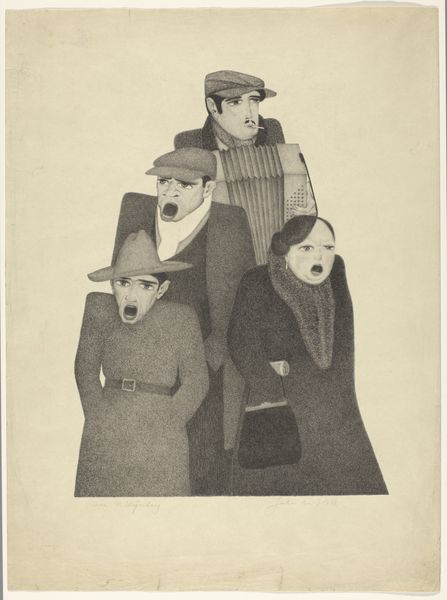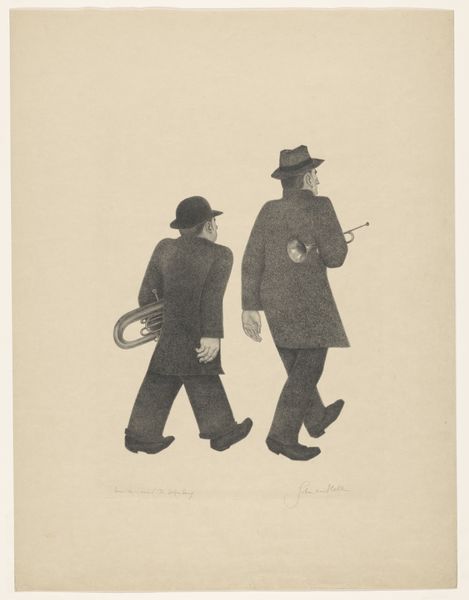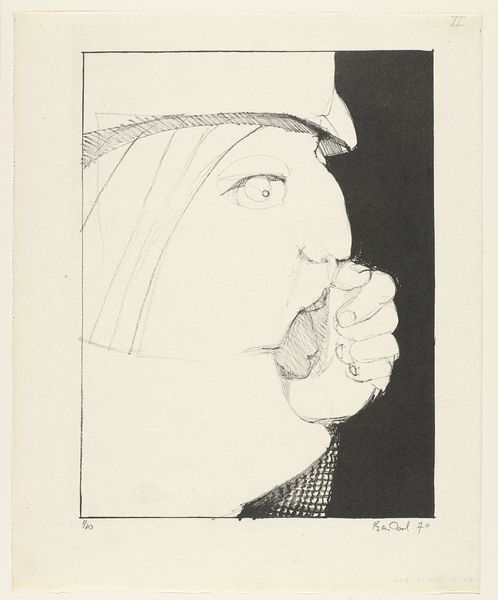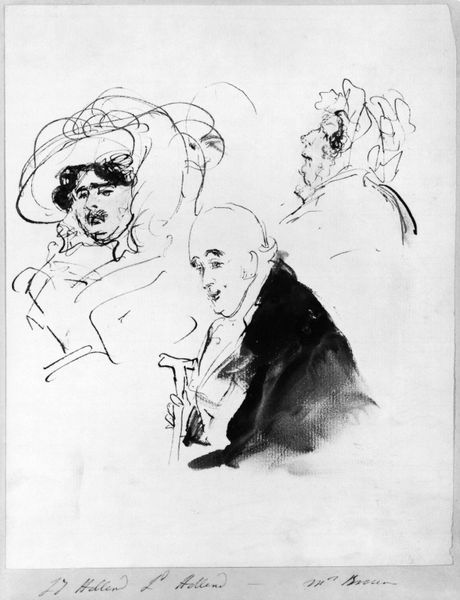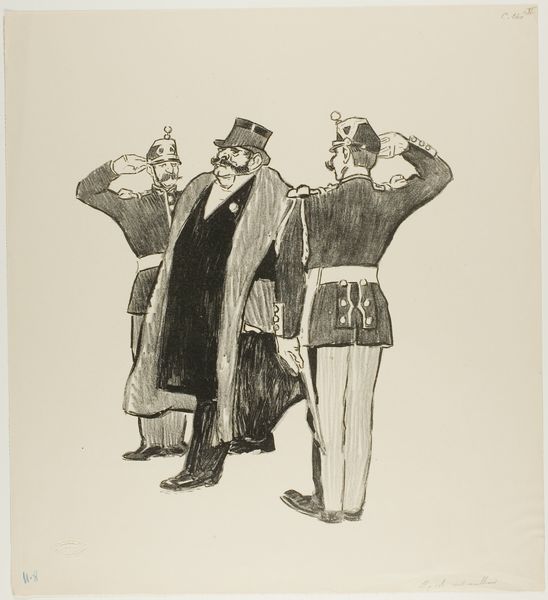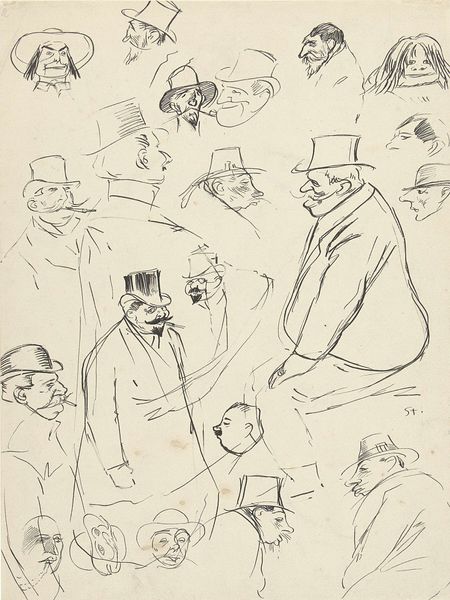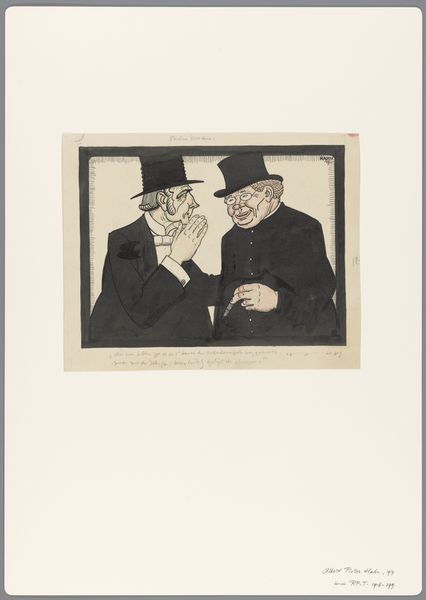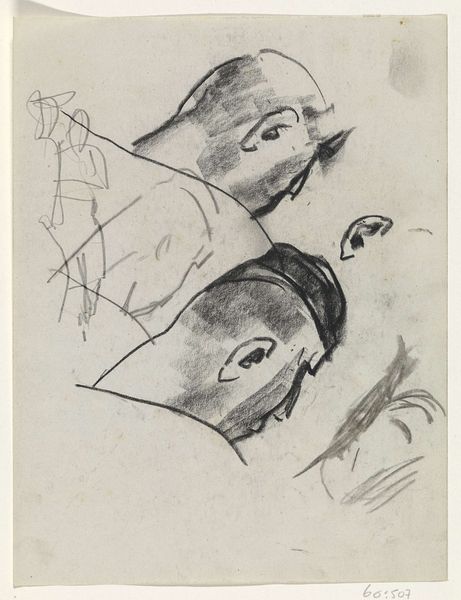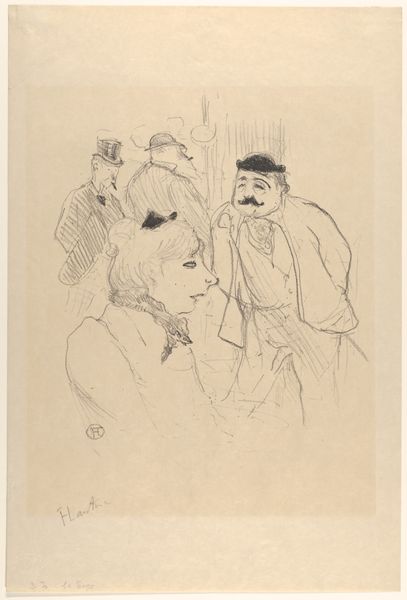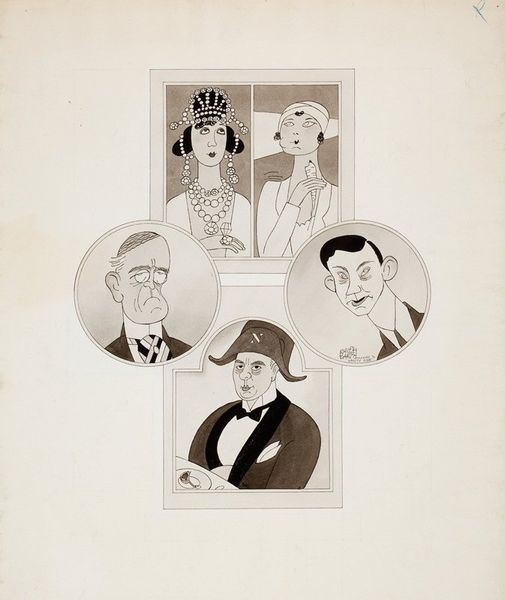
Dimensions: image: 195 x 175 mm
Copyright: © The estate of James Boswell | CC-BY-NC-ND 4.0 DEED, Photo: Tate
Curator: James Boswell's "His Majesty's Servants," held here at the Tate, immediately strikes me as a caricature of power. It's stark, almost brutally so. Editor: Yes, the economy of line is remarkable. The faces are wonderfully grotesque, their hats symbols of rank, yet they look almost deflated, don't they? Curator: They do. It feels like a critique of the establishment, a sardonic wink at the self-importance of those in authority, rendered in simple monochrome. Perhaps there is a subtle nod to class dynamics and performative identities? Editor: It certainly begs questions about who they serve, and at what cost. Is it duty, or self-preservation, that contorts their features so? Curator: I think it's both, intertwined like the tendrils of a rather grim joke. Editor: A joke with a rather dark punchline, it seems. Boswell’s sharp economy really packs a punch, doesn't it? I feel the cold weight of institutional power. Curator: Precisely! A power that, even in its own time, was ripe for a bit of skewering. Editor: Indeed. It speaks volumes, with so little on the page.
Comments
tate 6 months ago
⋮
http://www.tate.org.uk/art/artworks/boswell-his-majestys-servants-p11663
Join the conversation
Join millions of artists and users on Artera today and experience the ultimate creative platform.
tate 6 months ago
⋮
This satirical lithograph portrays three government officers as both corpulent and untrustworthy. It was made in the year of the Sedition Bill which aimed to restrict freedom of speech. Boswell's sympathies lay with the working class who he believed were being oppressed by the ruling class. The stark linearity of this lithograph recalls the earlier work of the German realist artists George Grosz and Otto Dix, who had employed a new objectivity to criticise contemporary society in the 1920s. Gallery label, August 2004

